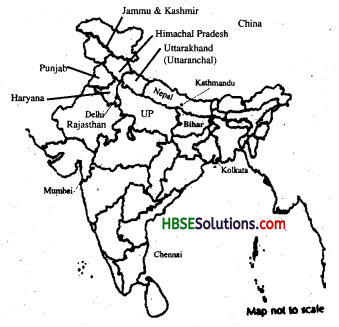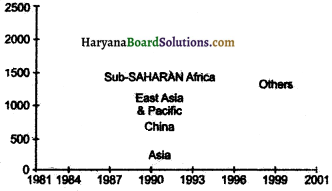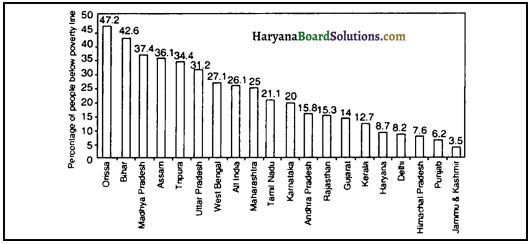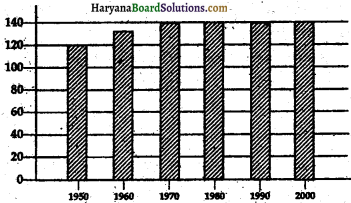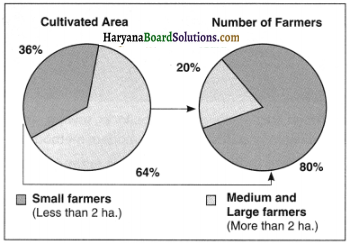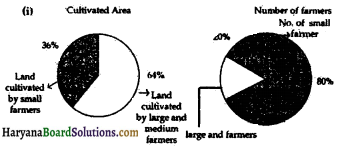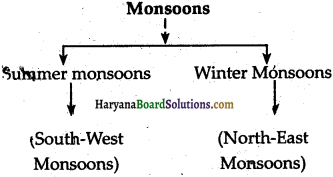Haryana State Board HBSE 9th Class English Solutions Beehive Chapter 9 The Bond of Love Textbook Exercise Questions and Answers.
Haryana Board 9th Class English Solutions Beehive Chapter 9 The Bond of Love
HBSE 9th Class English The Bond of Love Textbook Questions and Answers
The Bond Of Love Question Answers HBSE 9th Class
Thinking about Text
I. Given in the box are some headings. Find the relevant paragraphs in the text to match the headings.
EM orphaned cub; Bruno’s food-chart; an accidental case of poisoning; playful Baba of separation; joy of reunion, A request to the zoo; An island in the courtyard.
1. An orphaned cub – Paragraph 3
2. Bruno’s food-chart – Paragraph 6
3. An accidental case of poisoning – Paragraph 8
4. Playful Baba – Paragraph 7
5. Pain of separation – Paragraph 14
6. Joy of reunion – Paragraph 16
7. A request to the zoo – Paragraph 19
8. An island in the courtyard – Paragraph 21

II. Answer the following questions.
The Bond Of Love Question Answer HBSE 9th Class Question 1.
‘I got him for her by accident.
(“मैंने अचानक ही उसको उसके लिए पा लिया।”)
(i) Who says this?
(यह कौन कहता है?)
Answer:
The author says this.
(यह लेखक कहता है।)
(ii) Who do ‘him’ and ‘her’ refer to?
(‘him’ और ‘her’ शब्द किसके लिए प्रयोग किए गए हैं?)
Answer:
The word ‘him’ refers to the sloth bear and ‘her’ refers to the author’s wife.
(‘him’ शब्द स्लॉथ रीछ के लिए प्रयोग किया गया है और ‘her’ शब्द लेखक की पत्नी के लिए प्रयोग किया गया है।)
(iii) What is the incident referred to here?
(यहाँ किस घटना का वर्णन किया गया है?)
Answer:
It is the incident when the author and his friends were passing through the sugarcane fields near Mysore. They saw a black sloth bear in their way. One of the author’s companions shot the bear. It was a mother bear. It died on the spot leaving behind its orphaned cub. The author picked up the cub and brought home for his wife..
(यह वह घटना है जब लेखक और उसके मित्र मैसूर के निकट से एक गन्ने के खेतों के बीच से गुजर रहे थे। एक काले रंग का सुस्त रीछ उनके मार्ग में आ गया। लेखक के एक मित्र ने रीछ को गोली मार दी। वह एक माँ रीछ थी। वह अपने अनाथ बच्चे को छोड़कर तुरंत मर गई। लेखक ने रीछ के बच्चे को उठा लिया और अपनी पत्नी के लिए घर ले आया।)

Class 9th Beehive Chapter 9 Question Answer HBSE Question 2.
‘He stood on his head in delight.’
(‘वह खुशी के मारे अपने सिर पर खड़ा हो गया।)
(i) Who does the’ refer to?
(‘वह’ कौन है?)
Answer:
‘He’ refers to Bruno or Baba, the pet bear.
(‘वह’ ब्रूनो अर्थात् बाबा, पालतू रीछ है।)
(ii) Why was he delighted?
(वह प्रसन्न क्यों था?)
Answer:
He was delighted to see the author’s wife. He howled with happiness. When the author’s wife petted him through the bars, he stood on his head in delight.
(वह लेखक की पत्नी को देखकर प्रसन्न था। वह खुशी से चिल्लाया। जब लेखक की पत्नी ने उसे सलाखों के बीच से पुचकारा तो वह खुशी के मारे अपने सिर पर खड़ा हो गया।)
Question 3.
‘We all missed him greatly; but in a sense we were relieved.
(‘हमें उसकी बहत अधिक याद आ रही थी; परंतु एक प्रकार से हम राहत भी महसस कर रहे थे।)
(i) Who does ‘we all’ stand for?
(‘हम सभी’ किसके लिए प्रयोग किया गया है?)
Answer:
“We all’ stands for the author, his wife, his sons and his friends.
(‘हम सभी’ लेखक, उसकी पत्नी, उसके बेटों तथा उसके मित्रों के लिए प्रयोग किया गया है।)
(ii) Who did they miss?
(उन्हें किसकी याद सताती थी?)
Answer:
They missed Brano or Baba because he had been sent to 700.
(उन्हें ब्रूनो अर्थात् बाबा की याद सताती थी, क्योंकि उसे चिड़ियाघर भेजा जा चुका था।)
(iii) Why did they nevertheless feel relieved?
(वि राहत क्यों महसूस कर रहे थे?)
Answer:
They felt relieved that the bear was going to the zoo. Now it had become too big to be kept at home.
(उन्हें राहत महसूस हुई क्योंकि रीछ चिड़ियाघर जा रहा था। वह अब इतना बड़ा हो गया था कि उसे घर पर नहीं रखा जा सकता था।)

III. Answer the following questions in 30 to 40 words each:
Question 1.
On two occasions Bruno ate/drank something that should not be eaten/drunk. What happened to him on these occasions?
(दो अवसरों पर बनो ने किसी ऐसी चीज को खा लिया था और पी लिया था जिसे खाया या पीया नहीं जाना चाहिए था। इन अवसरों पर उसके साथ क्या हुआ था?)
Answer:
On one occasion Bruno ate barium carbonate poison which was kept by the author in his library for killing rats. Bruno got paralysis. He was taken to a veterinary doctor. He gave Bruno two injections of antidote. It cured Bruno. On another occasion Bruno drank one gallon of engine oil. But it had no ill effects on Bruno.
(एक अवसर पर ब्रूनो ने बेरियम कानिट जहर खा लिया था जिसे लेखक ने अपने पुस्तकालय में चूहों को मारने के लिए रखा था। बूनो को लकवा हो गया। उसे एक पशु चिकित्सक के पास ले जाया गया। उसने ब्रूनो को दो जहर रोधी टीके लगाए। इससे ब्रूनो स्वस्थ हो गया। दूसरे अवसर पर ब्रूनो ने एक गैलन ईंजन का पुराना तेल पी लिया था। परंतु इसका ब्रूनो के ऊपर कोई बुरा प्रभाव नहीं पड़ा।)
Question 2.
Was Bruno a loving and playful pet? Why, then, did he have to be sent away?
(क्या ब्रूनो एक प्यारा और खेल प्रेमी पालतू पशु वा? तब, उसे चिड़ियाघर में क्यों भेजा गया?)
Answer:
Bruno was a loving and playful pet. He loved the author’s wife very much. Now he had become very strong and powerful. He had to be sent to zoo because of the tenant’s small children. It was feared lest he should make them harm.
(ब्रूनो एक बहुत ही प्यारा और खेल प्रेमी पशु था। वह लेखक की पत्नी से बहुत प्यार करता था। अब वह बहुत बड़ा और शक्तिशाली हो गया था। उसे किराएदार के छोटे-छोटे बच्चों के कारण चिड़ियाघर भेजा गया। इस बात का भय था कि कहीं वह उन बच्चों को कोई नुकसान न पहुँचा दे।)

Question 3.
How was the problem of what to do with Bruno finally solved?
(ब्रूनो का क्या किया जाए इस बात का हल अंततः किस प्रकार ढूंढा गया?)
Answer:
The author’s family finally decided to send Bruno to zoo. They wrote a letter to the curator of the zoo if he wanted a tame bear for his zoo. He gave a positive response. Bruno was sent to zoo in a cage.
(लेखक के परिवार ने अंततः ब्रूनो को चिड़ियाघर भेजने का निर्णय कर लिया। उन्होंने चिड़ियाघर के प्रभारी को एक पत्र लिखा कि क्या उसे अपने चिड़ियाघर के लिए एक रीछ चाहिए। उसने एक सकारात्मक उत्तर दिया । ब्रूनो को एक पिंजरे में डालकर भेज दिया गया।)
Thinking about language
I.
Question 1.
Find these words in the lesson. They all have ie or ei in them.
- f_ _ld
- ingred_ _nts
- h_ _ght
- misch_ _vous
- fr_ _nds
- _ _ghty-seven
- rel_ _ved
- p_ _ce
Answer:
- field
- ingredients
- height
- mischievous
- friends
- eighty-seven
- relieved
- piece

2. Now here are some more words. Complete them with ei or ie. Consult a dictionary if necessary.
- bel_ _ve
- rec_ _ve
- w_ _rd
- I_ _sure
- s_ _ze
- w_ _ ght
- r_ _gn
- f_ _gn
- gr_ _f
- p_ _rce
(There is a popular rule of spelling : ‘i’ before ‘e’ except after ‘c’. Check if this rule is true by looking at the words above.)
Answer:
- believe
- receive
- weird
- leisure
- seize
- weight
- reign
- feign
- grief
- pierce

II. Here are some words with silent letters. Learn their spelling. Your teacher will dictate these words to you. Write them down and underline the silent letters.
| knock | wrestle | walk | wrong |
| knee | half | honest | daughter |
| hours | return | hornet | calm |
| could | sign | island | button |
Answer:
| knock | wrestle | walk | wrong |
| knee | half | honest | daughter |
| hours | return | hornet | calm |
| could | sign | island | button |
III. How to look at an Index
An index is a list of names or topics that are to be found in a book. It is a list arranged in alphabetical order at the end of a book.
The following paragraph shows that the doctor is consulting the index of a medical book to find out which injection is appropriate for Bruno.
“Out came his medical books, and a feverish reference to index began : What poison did you say, sir?”
“Barium carbonate”. “Ah yes-B-Ba-Barium Salts-Ah! Barium carbonate! Symptoms-paralysis-treatment- injections of …………… Just a minute, sir. I’ll bring my syringe and the medicine.”
1. You have read about the French Revolution and you want to know more about the Third Estate in the context of the French Revolution. You can refer to the index of the book Living World History by T. Walter Wallbank and Arnold Schrier :
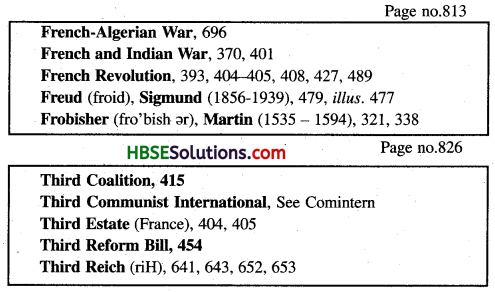
On which pages in this book will you find information about the French Revolution and the Third Estate?
2. To know what ‘ F ood Security ’ and ‘Minimum Support Price ’ mean in the context ofthe economic growth of a country you can go to the subject index given below from Poverty and Famines-An Essay on Entitlement and Deprivation by Amartya Sen. Under which heading in the index are you likely to find these topics?

3. Given below is a portion of an Index page from the book ‘French’s Index of Differential Diagnosis’, edited by F. Dudley Hart M.D., F.R.C.P.

Study the entries and find out whether the following topics are discussed in the book.
- bronchitis due to cigarette smoking
- heart failure due to bronchitis
- bronchitis in children

IV.
Question 1.
The Narrative Present
Notice the incomplete sentences in the given paragraphs. Here the writer is using incomplete sentences in the narration to make the incident more dramatic or immediate. Can you rewrite the paragraph in complete sentences?
(You can begin : The vet and I made a dash back to the car. Bruno was still floundering…)
(i) A dash back to the car. Bruno still floundering about on his stumps, but clearly weakening rapidly; some vomiting, heavy breathing, with heaving flanks and gaping mouth.
Hold him, everybody! In goes the hypodermic-Bruno squeals-10 c.c. of the antidote enters his system without a drop being wasted. Ten minutes later : condition unchanged! Another 10 c.c. injected! Ten minutes later: breathing less stertorous-Bruno can move his arms and legs a little although he cannot stand yet. Thirty minutes later : Bruno gets up and has a great feed! He looks at us disdainfully, as much as to say, ‘What’s barium carbonate to a big black bear like me?’ Bruno is still eating.
Answer:
The vet and I made a dash back to the car. Bruno was still floundering about on his stumps, but clearly weakening rapidly. He was having vomiting, heavy breathing with heaving flanks and gasping mouth.
The vet says, “Hold him, everybody!” The vet gives an injection of hypodermic. As soon as the injection goes in, Bruno squeals. 10 c.c. of the antidote enters his system without a drop being wasted. Ten minutes later his condition remains unchanged.
Another 10 c.c. injected! Ten minutes later he started breathing less stertorous. Bruno can move his arms and legs a little although he can not stand yet. Thirty minutes later finally Bruno gets up and has a great feed! He looks at us disdainfully, as much as to say, ‘What’s barium carbonate to a big black bear like me?’ Bruno is still eating.
(ii) In the paragraph above from the story the verbs are in the present tense (eg. hold, goes, etc.). This gives the reader an impression of immediacy. The present tense is often used when we give a commentary on a game (cricket, football, etc.), or tell a story as if it is happening now. It is, therefore, called the narrative present.
You will read more about the present tense in unit 10.

Question 2.
Adverbs
Find the adverbs in the passage below. (You’ve read about adverbs in unit 1.)
We thought that everything was over when suddenly a black sloth bear came out panting in the hot sun. Now I will not shoot a sloth-bear wantonly but, unfortunately for the poor beast, one of my companions did not feel that way about it, and promptly shot the bear on the spot.
(i) Complete the following sentences, using a suitable adverb ending in-ly.
(a) Rana does her homework _______ .
(b) It rains _______ in Mumbai in June.
(c) He does his work _______ .
(d) The dog serves his master _______ .
Answer:
(a) clearly
(b) heavily
(c) slowly
(d) faithfully
(ii) Choose the most suitable adverbs or adverbial phrases and complete the following sentences.
(a) We should _______ get down from a moving train, (never, sometimes, often)
(b) I was _______ in need of support after my poor performance, (badly, occasionally, sometimes)
(c) Rita met with an accident. The doctor examined her _______ . (suddenly, seriously, immediately)
Answer:
(a) never
(b) badly
(c) immediately

Question 3.
Take down the following scrambled version of a story, that your teacher will dictate to you, with appropriate punctuation marks. They, read the scrambled story carefully and try to rewrite it rearranging the incidents.
A grasshopper, who was very hungry, saw her and said, “When did you get the com? I am dying of hunger.” She wanted to dry them. It was a cold winter’s day, and an ant was bringing out some grains of com from her home. She had gathered the com in summer.
“I was singing all day,” answered the grasshopper.
“If you sang all summer,” said the ant, “you can dance all winter.”
“What were you doing?” asked the ant again.
The grasshopper replied, “I was too busy.”
“I collected it in summer,” said the ant. “What were you doing in summer? Why did you not store some com?”
Answer:
It was a cold winter’s day, and an ant was bringing out some grains of com from her home. She had gathered the com in summer. She wanted to dry them. A grasshopper, who was very hungry, saw her and said, “When did you get the com? I am dying of hunger.” “I collected it in summer,” said the ant. “What were you doing in summer? Why did you not store some com?” The grasshopper replied, “I was too busy.” “What were you doing?” asked the ant again. “I was singing all day,” answered the grasshopper. “If you sang all summer,” said the ant, “you can dance all winter.”

Speaking
‘Animals also feel the pleasure of love and the pain of separation.’ Make a presentation by giving examples from your own experience.
Answer:
It is true that animals also feel the pleasure of love and the pain of separation. I can prove this point by mentioning, the experiences from my life. Last summer vacation I visited the house of my Nanaji. He lives in a village near Bhiwani. He is a farmer and has many cows. One of the cows is Lakshmi. It is an old cow. All the family members love it very much. I too started loving it.
One day some animal traders came to my Nanaji’s house. He sold the cow Lakshmi to them. They were taking the cow, but it would not go. They took it forcibly. But when it reached its new destination it was very sad. It felt the pain of separation from the house of my Nanaji. It refused to take food and drink water and kept weeping continuously till four days.
The people in that family could not bear this pain of the cow. They loaded it in a tractor-trolley and drove it back to my Nanaji’s house. As soon as the cow got down the trolley, its eyes gleamed. It was happy to be reunited. It drank water and ate grass from the hands of my Nanaji. I was so much impressed by watching all this. My Nanaji repaid their amount and kept the cow back.

Writing
Pets have unique care and handling requirements and should only be kept by those with the commitment to understand and meet their needs. Give your argument in support of or against this statement.
Answer:
Pets have the same understanding of love and pain as the human beings have. If we have any problem, we can express it to others very easily by speaking but if the animals have any such trouble, they can’t express themselves so easily because they can’t speak. We can understand their love and pain by their expression.
The pets should be kept only by those who have a commitment to understand and meet the needs of animals. If the person having pets is unable to understand the behaviour of his pets, their life becomes very troublesome. They deserve the same love and attention as we do to our dear ones.
There must be legal provisions to ban the cruelties on pets and these legal provisions must be put into practice strictly. If we are kind and noble to our pets it will be a great service to Almighty God because all these creatures are His creation.

OR
There is an on-going debate on whether snake charmers should continue in their profession. You can get some idea about the debate from the newspaper clipping (The Hindu, 16 June, 2004) given below. Read it, discuss in pairs or groups, and write either for or against the profession of Snake charmers.
REPORT COMES IN SUPPORT OF SNAKE CHARMERS
BY OUR STAFF REPORTER
NEW DELHI, JUNE 15. Over 30 years after the introduction of the Wildlife Protection Act (WPA) that banned the catching of snakes in India, a small community of snake charmers continues to practise the trade catching over 400,000 snakes every year – which ultimately die – in defiance of the law.
A report based on new research by the Wildlife Trust of India (WTI), however, has strongly recommended that the traditional knowledge of the snake charmers and skills be now utilised for education and medicine by setting up sapera centres. This is mainly because the community has virtually no access to land, education or employment opportunities. They are dependent on snake charming to earn a livelihood. They trade around as vendors of traditional medicine, snake catchers and musicians. Ignorance about the law is quite common.
The report entitled “Biodiversity, Livelihoods and the Law : The Case of the Jogi-Nath Snake Charmers of India” based on path-breaking research was formally released by the Inspector General of Forests. V.K. Bahuguna, along with a presentation by members of the sapera community in the Capital on Monday.
“Despite thirty years of the law being in existence, over 70 per cent of the Jogi-Naths are still dependent on snake charming to earn a livelihood. Ignorance about the law was quite common. None of them own land, even though they would like to,” said Bahar Dutt, who led this research. Notably, most of those practising the trade in the current generation are all under 35 years of ago.
Trapping occurs throughout the year and during their travels, though this activity increases during the monsoons. According to the data, each family on an average collects at least seven snakes.
Most snakes were force-fed and snake husbandry methods and health were found to be poor. “The snake charmers community council imposes a heavy fine on a person if the snake dies in his custody as it is considered an extremely bad omen. As a result, the snakes are released when the charmers realise that their condition is deteriorating,” said Dutt.
Their ambition to showcase the reptiles and earn money was not fulfilled, as they flouted four WPA provisions, for illegally’possessing the animals, not feeding them properly, causing injuries by extracting teeth unscientifically and killing snakes for the valuable snake parts and bones. Then- offence generally invites imprisonment for three to seven years and a fine up to Rs. 25,000 in each case.
“On the positive side researchers found that the snake charmers possess a unique ability to handle venomous snakes with a tremendous knowledge of the different species and their behaviour. They are also called by local farmers to retrieve snakes, who would otherwise just kill them from agricultural fields or human inhabited areas,” she said.

HBSE 9th Class English Kathmandu Important Questions and Answers
Very Short Answer Type Questions
Question 1.
Who was Bruno?
Answer:
Bruno was the author’s wife’s pet sloth bear.
Question 2.
Where did the author find the bear cub?
Answer:
The author found the bear cub when he was passing through the sugarcane fields near mysore.
Question 3.
Who did the author present the bear cub to?
Answer:
The author presented the bear cub to his wife.
Question 4.
What was Bruno brought up on?
Answer:
Bruno was brought up on bottlemilk, fruit, rice and potatoes.
Question 5.
What did the bear become very attached to?
Answer:
The bear became very attached to the author’s two Alsatian dogs.
Question 6.
Why did the author put barium carbonate poison in home?
Answer:
He put this poison in home to kill rats and mice.

Question 7.
What was the effect of poison on Bruno?
Answer:
Bruno suffered a paralysis attack and he could not stand on his feet.
Question 8.
What new name did the author’s wife give to Bruno?
Answer:
She gave him a new name‘Baba’.
Question 9.
Where did the author send ‘Baba’ to?
Answer:
The author sent ‘Baba’ to Mysore zoo.
Question 10.
What request did the author’s wife make to the superintendent to the zoo?
Answer:
She requested the superintendent of the zoo to return ‘Baba’ to her.
Question 11.
Why was a squad of coolies engaged?
Answer:
A squad of coolies was engaged to take down ‘Baba’s box from the top of the car.

Short Answer Type Questions
Question 1.
Bruno once got paralysis. Why? How was he treated?
(एक बार ब्रूनो को लकवा हो गया। क्यों? उसका इलाज कैसे किया गया?)
Answer:
Once the author kept barium carbonate in his library for killing rats. Bruno ate most of it. It was a poison. So he got paralysis. He was taken to a veterinary doctor. He gave Bruno two injections of antidote. It cured Bruno.
(एक बार लेखक ने अपने पुस्तकालय में चूहों को मारने के लिए बेरियम कार्बोनेट रख दिया। ब्रूनो ने उसमें से बहुत सारे को खा लिया। वह एक जहर था। इसलिए उसे लकवा हो गया। उसे एक पश चिकित्सक के पास ले जाया गया। उसने इस जहर को मारने के लिए दो टीके लगाए। इससे ब्रूनो ठीक हो गया।)
Question 2.
“The bear became attached to the dogs, to the children in the neighbourhood.” Which qualities of the bear are highlighted in this statement?
(“ब्रूनो का पड़ोस के कुत्तों और बच्चों से लगाव हो गया।” इस कवन से ब्रूनो की किन विशेषताओं का पता चलता है?)
Answer:
It shows that the bear had human qualities. Like human beings it also needed love and knew how to respond to love. He developed friendship not only with animals but with human beings also.
(इससे पता चलता है कि ब्रूनो में मानवीय गुण थे। इंसानों की तरह उसे भी प्यार चाहिए था और वह यह भी जानता था कि प्यार का उत्तर कैसे दिया जाता है। उसने न केवल पशुओं बल्कि इंसानों के साथ भी मित्रता कर ली।)

Question 3.
Bruno was sent off to Mysore zoo. What happened to
(i) the author’s wife
(ii) Bruno after this? Why?
(ब्रूनो को मैसूर चिड़ियाघर में भेज दिया गया था।
(i) लेखक की पत्नी
(ii) ब्रूनो के साथ उसके पश्चात क्या बीती? क्यों?)
Answer:
(i) The author’s wife felt very sad. She wept bitterly. She was uneasy and inconsolable. For the first few days, she refused to take food.
(i) लेखक की पत्नी बहुत उदास हो गई। वह फूट-फूटकर रोने लगी। वह बेचैन थी और उसे सांत्वना देना कठिन था। पहले कुछ दिन तो उसने भोजन खाने से भी मना कर दिया।
(ii) Bruno’s condition was similar. He also refused food. He became thin and sad. Both of them missed each other badly.
(ii) ब्रूनो की स्थिति भी वैसी ही थी। उसने भी भोजन करने से मना कर दिया। वह कमजोर और उदास हो गया। दोनों को एक दूसरे की बुरी तरह याद आ रही थी।)
Question 4.
Why did Bruno become very special after he returned from Mysore zoo?
(जब ब्रूनो मैसूर चिड़ियाघर से लौटा तो वह बहुत खास क्यों बन गया?)
Answer:
The author’s wife wanted to make Bruno feel at home. They made a special island for him. She would sit there for hours and Bruno would sit in her lap. Thus he became special after his return from the Mysore zoo.
(लेखक की पली चाहती थी कि ब्रूनो बिल्कुल जंगल जैसा माहौल अनुभव करे। उन्होंने उसके लिए एक विशेष टापू बना दिया। वह वहाँ घंटों बैठी रहती थी और ब्रूनो उसकी गोद में बैठा रहता था। इस प्रकार से मैसूर चिड़ियाघर से लौटने के पश्चात वह खास (विशेष) बन गया।).

Question 5.
“Oh, please, sir,” She asked the curator, “May I have my Baba back?”
(“ओह, श्री मान जी, कृपया” उसने प्रबंधक से कहा, “ क्या मुझे मेरा बाबा वापस मिल सकता है?”)
(a) Who is ‘she’ in the above line?
(ऊपर की पंक्ति में ‘वह’ कौन है?)
(b) Who is the curator?
(प्रबंधक कौन है?)
(c) What is Baba’s other name?
(‘बाबा’ का दूसरा नाम क्या है?)
(d) Why does she want Baba back?
(वह बाबा को वापस क्यों पाना चाहती है?)
Answer:
(a) ‘She’ is the author’s wife.
(‘वह’ लेखक की पत्नी है।)
(b) The curator is the manager of the Mysore zoo.
(प्रबंधक मैसूर के चिड़ियाघर का मैनेजर है।)
(c) Bruno.
(ब्रूनो।)
(d) Because she could not bear his absence.
(क्योंकि वह उसकी अनुपस्थिति सहन नहीं कर सकती।)
Essay Type Questions
Question 1.
Can the company of an animal give undiluted pleasure to a human being. Give some examples from the story.
(क्या किसी मनुष्य को किसी पशु की संगति से सघन आनंद प्राप्त होता है? कहानी में से कुछ उदाहरण दीजिए।)
Answer:
Yes, it can give pure pleasure to a human being. The bond of love between man and animal is better than between man and man. Human beings are selfish and their love is seldom pure and selfless. We often do not respond to love given to us. On the other hand, an animal’s love is pure. Like human beings, animals too need love and respond to that love.
In this story, the author’s wife loves a pet bear. He too responds to that love. She plays with him, fondles and loves him. When the bear is sent to the zoo, she becomes inconsolable. On the other hand, the bear also does not like his separation from her. He refuses to take food in the zoo. When she goes to meet him at the zoo, he shouts with pleasure. In the end, she brings him back from the zoo. Thus we find that the company of an animal gives undiluted pleasure to a human being.
(हाँ, इससे मनुष्य को विशुद्ध आनंद प्राप्त होता है। मनुष्य और पशु के बीच प्यार का रिश्ता मनुष्य और मनुष्य के बीच रिश्ते से अच्छा होता है। मनुष्य स्वार्थी होते हैं और उनका प्यार शुद्ध और स्वार्थहीन नहीं होता है। हम प्रायः अपने को प्राप्त होने वाले प्यार का उत्तर नहीं देते हैं। दूसरी ओर एक पशु का प्यार शुद्ध होता है। मनुष्यों की तरह पशुओं को भी प्यार की आवश्यकता होती है और वे उस प्यार का उत्तर देते हैं।
इस कहानी में लेखक की पत्नी एक पालतू रीछ को प्यार करती है। वह भी उस प्यार का उत्तर देता है। वह उसके साथ खेलती है, उसे दुलार करती है और उसके साथ प्यार करती है। जब रीछ को चिड़ियाघर भेज दिया जाता है, तो वह बहत अधीर हो जाती है। दूसरी ओर रीछ भी उससे अपनी जदाई सहन नहीं कर पाता है।
वह चिड़ियाघर में भोजन खाने से मना कर देता है। जब वह उससे मिलने के लिए चिड़ियाघर में जाती है, तो यह खुशी से चिल्ला उठता है। अंत में वह उसे चिड़ियाघर से वापस ले आती है। इस प्रकार से हम देखते हैं कि एक पशु की संगति से मनुष्य को सघन आनंद की प्राप्ति होती है।)

Question 2.
‘Love is mutual’. Illustrate this with reference to the story “The Bond of Love’.
(‘प्यार पारस्परिक होता है। इसकी विवेचना ‘The Bond of Love’ कहानी के संदर्भ में करो।)
Answer:
“The Bond of Love is the story of love and friendship between an animal and a human being. One day the author found a bear cub in a field. He took it home and presented it to his wife. The bear and the author’s wife developed great love for each other. When the bear grew up, it was sent to the zoo at Mysore. She became very sad.
After three months, she visited the zoo. The bear, whose name was Baba, at once recognized her and danced with happiness. She came back. But she could not live without the bear. So she got the permission of the zoo superintendent to get the bear back. A special place was made at home for the grown up bear. Now both the bear and the writer’s wife were happy. The story shows that animals too have as much love and affection as human beings have. Thus, the title of the story is very appropriate.
(‘The Bond of Love’ एक जानवर एवं मनुष्य के बीच दोस्ती की कहानी है। एक दिन लेखक को एक खेत में रीछ का बच्चा मिला। वह उसे घर ले आया और उसे अपनी पत्नी को भेंट किया। रीठ और लेखक की पत्नी के बीच एक-दूसरे के लिए बहुत प्यार विकसित हो गया। जब रीछ बड़ा हो गया तो उसे मैसूर के चिड़ियाघर में भेज दिया गया। वह बहुत उदास हो गई।
तीन महीने बाद वह चिड़ियाघर गई। रीछ, जिसका नाम बाबा था, ने उसे पहचान लिया और खशी से नाचने लगा। वह वापस आ गई। मगर वह रीछ के बिना नहीं रह सकती थी। उसने चिड़ियाघर के अधीक्षक से रीछ को वापस ले जाने की अनुमति ले ली। इस विकसित रीठ के लिए घर में विशेष स्थान बनाया गया। अब रीछ एवं लेखक की पत्नी दोनों ही बहुत प्रसन्न थे। कहानी बताती है कि जानवरों में भी उतना ही प्यार एवं स्नेह होता है जितना मनुष्यों में। इस प्रकार कहानी का शीर्षक बहुत उपयुक्त है।)

Question 3.
How did the author’s wife behave in the absence of the bear? Describe Baba’s condition at the zoo in Mysore.
(रीछ की अनुपस्थिति में लेखक की पत्नी ने कैसे बर्ताव किया? मैसूर के चिड़ियाघर में बाबा की हालत का वर्णन करो।)
OR
“Animals also feel the pleasure of love and the pains of seperation.” Support your view by giving examples from the text.
(“पशु भी प्यार की संजीदगी तथा जुदाई की पीड़ा महसूस करते हैं।” अपने इस विचार के लिए पाठ से उदाहरण दें।)
Answer:
With the passage of time, the bear became too big to be kept at home. The author, his friends and his son advised the author’s wife to gift Baba to the zoo at Mysore. After some weeks of such advice, she finally agreed. A letter was written to the curator of the zoo. He agreed to take the bear.
Baba was sent to the Mysore zoo in a cage. But the author’s wife felt very sad. She wept and for the first few days, refused to take food. She wrote a number of letters to the curator of the zoo. She asked in her letters about the condition of Baba. At the zoo, Baba was also in a similar position. He was inconsolable. He also did not take food for the first few days. He was well but looked thin and sad.
(समय के बीतने के साथ ब्रूनो इतना बड़ा हो गया कि अब उसे घर पर नहीं रखा जा सकता था। लेखक, उसके मित्रों और उसके बेटे ने उसे सलाह दी कि बाबा को मैसूर के चिड़ियाघर को भेंट कर दिया जाए। कुछ सप्ताहों की ऐसी सलाह के बाद वह अंत में सहमत हो गई। चिड़ियाघर के प्रबंधक को एक पत्र लिखा गया। वह रीछ को लेने के लिए मान गया।
बाबा को एक पिंजरे में डालकर मैसूर चिड़ियाघर में भेज दिया गया। मगर लेखक की पत्नी बहुत उदास हो गई। वह रोई और कुछ दिन तक इसने भोजन करने से इंकार कर दिया। उसने चिड़ियाघर के प्रबंधक को कई पत्र लिखे। अपने पत्रों में उसने बाबा की हालत के बारे में पूछा। चिड़ियाघर में बाबा भी ऐसी ही हालत में था। वह सांत्वना से परे था। उसने भी आरंभ के कुछ दिनों में भोजन नहीं किया। वह अच्छा था मगर पतला और उदास लगता था।)
Question 4.
What makes you feel that the mother is more attached to Bruno than the other members of the family? Give reasons.
(आपको ऐसा क्यों लगता है कि माँ ब्रूनो से परिवार के अन्य सदस्यों की अपेक्षा अधिक प्यार करती है? कारण दीजिए।)
Answer:
The author brings the bear cub and presents it to his wife. Very soon, the baby bear becomes the darling of every one. The author’s wife and son love him. All the children of the tenants in that bungalow develop a loving relationship with him. But the author’s wife develops a special affection for him. It is a motherly affection. She looks after the bear as if he were her own child.
At first, she gives him milk with a bottle. But very soon, the bear is able to eat everything. She spends a lot of time with him. She teaches him to perform a number of tricks. When Bruno is sent to the zoo, she weeps bitterly. After three months she goes to meet him. In the end, she brings him back. Thus, we see that she is more attached to Bruno than the other members of the family
(लेखक रीछ के बच्चे को घर ले आता है और उसे अपनी पत्नी को भेंट कर देता है। शीघ्र ही रीछ का बच्चा सभी का प्रिय बन जाता है। लेखक की पत्नी और बच्चा उससे प्यार करते हैं। बंगले में सभी किराएदारों के बच्चे उसके साथ प्यार करने लग जाते हैं। लेकिन लेखक की पत्नी का उसके प्रति विशेष स्नेह पैदा हो जाता है। यह एक मां का स्नेह है। वह रीछ का इस प्यार से ख्याल रखती है जैसे कि वह उसका अपना बच्चा हो।
पहले तो उसे वह बोतल से दूध पिलाती है लेकिन शीघ्र ही रीछ सब कुछ खाने लग गया। वह बहुत सारा समय उसके साथ बिताती है। वह उसे बहुत सारे करतब करना सिखाती है। जब ब्रूनो को चिड़ियाघर भेजा जाता है तो वह फूट-फूट कर रोती है। तीन महीने बाद वह उससे मिलने जाती है। अंत में वह उसे वापस ले आती है। इस प्रकार से हम देखते हैं कि वह परिवार के अन्य सदस्यों की अपेक्षा ब्रूनो से अधिक लगाव में है।)

Question 5.
How did the writer get a baby-bear for his wife?
(लेखक ने अपनी पत्नी के लिए रीठ का बच्चा कैसे प्राप्त किया?)
Answer:
Two years ago, the author and his friends were passing through the sugarcane fields near Mysore. People were driving away the wild pigs from their fields by shooting at them. Suddenly a sloth bear came out of the field. One of the writer’s companions shot at the bear. It fell dead. They came near the fallen animal. They saw a bear cub riding on its mother’s back.
The cub was making pitiful howls. The writer tried to catch it. But the bear cub ran away into the field. The writer and his companions ran after it. At last they were able to catch it. The baby bear tried to free itself. It tried to scratch the author with its long, hooked claws. They put the bear into a gunny bag and brought it to Bangalore. The author presented the little creature to his wife. She was very happy. She named the bear cub Bruno
(दो साल पहले लेखक और उसके मित्र मैसूर के निकट गन्ने के एक खेत में से गुजर रहे थे। लोग अपने खेतों में जंगली सूअरों को गोली मारकर भगा रहे थे। अचानक खेत में से एक रीछ निकला। लेखक के एक साथी ने उस पर गोली चला दी। यह मरकर गिर गया। वे गिरे हुए जानवर के पास आए। उन्होंने रीठ के बच्चे को अपनी मां की पीठ पर चढ़े देखा। बच्चा करुणापूर्ण चीखें मार रहा था। लेखक ने उसे पकड़ने का प्रयत्न किया।
मगर रीछ का बच्चा भागकर खेत में चला गया। लेखक और उसके साथी उसके पीछे भागे। आखिर वे उसे पकड़ने में सफल हो गए। रीछ के बच्चे ने स्वयं को आज़ाद करवाने का प्रयत्न किया। उसने लेखक को अपने लंबे, मुड़े हुए पंजों से खरोंचे मारने का प्रयल किया। उन्होंने बच्चे को बोरी में डाला और बंगलौर ले आए। लेखक ने यह नन्हा प्राणी अपनी पत्नी को भेंट कर दिया। वह बा का नाम ब्रूनो रख दिया।)
Question 6.
Describe the two accidents that befell Bruno or Baha. How did he recover from them?
(ब्रूनो या बाबा के साथ जो दो दुर्घटनाएं घटित हुई उनका वर्णन करो। वह उनसे किस प्रकार ठीक हुआ?)
Answer:
One day an accident befell Bruno. There were rats in the author’s library. In order to kill them, he had put down barium carbonate in the library. It was poison. Bruno entered the library and ate some of the poison. He suffered from a stroke of paralysis. But dragged himself slowly to the author’s wife. He was weakening rapidly. He was breathing heavily and vomiting.
The author at once took him to a veterinary doctor. The vet gave him 10 cc of anti-dote through an injection. But his condition remained unchanged. Then another 10 cc was injected. This improved his condition. Bruno got up and enjoyed a good meal. At another time, the little bear drank a lot of old engine oil. But fortunately, it had no effect on him.
(एक दिन ब्रूना के साथ एक दुर्घटना हो गई। लेखक के पुस्तकालय में चूह था उन्हें मारने के लिए उसने पुस्तकालय में बेरियम कार्बोनेट रख दिया था। यह ज़हर था। ब्रूनो पुस्तकालय में आया और कुछ जहर खा गया। उसे लकवा हो गया। मगर वह स्वयं को धीरे-धीरे घसीटकर लेखक की पत्नी के पास लाया। वह बहुत जल्दी कमज़ोर पड़ रहा था। वह ज़ोर-ज़ोर से सांस ले रहा था और उल्टी कर रहा था।
लेखक उसे फौरन पशुओं के डॉक्टर के पास ले गया। डॉक्टर ने 10cc ज़हर नाशक दवाई टीके के रूप में दी। मगर उसकी हालत में कोई परिवर्तन नहीं हुआ। तब 10cc दवाई फिर दी गई। इससे उसकी हालत में सुधार हो गया। ब्रूनो उठा और उसने अच्छी प्रकार भोजन किया। एक अन्य समय इस छोटे से रीछ ने बहुत-सा पुराना इंजन का तेल पी लिया। मगर सौभाग्यवश, इसका उस पर कोई प्रभाव नहीं हुआ।)

Question 7.
Why was Bruno sent away to the zoo and why was he brought back?
(ब्रूनो को चिड़ियाघर में क्यों भेज दिया गया था और वह वापस क्यों आ गया था?)
Answer:
Bruno was a loving and playful pet. He loved the author’s wife very much. Now he had become very strong and powerful. It was feared lest he should make harm to the tenant’s small children. So that Bruno was sent away to the zoo. But the author’s wife was very sad at her separation from the bear. For three months, the author restrained her from visiting Mysore.
At last, he took his wife to Mysore zoo to meet Bruno. The author and his friends had guessed that the bear would not recognize her after three months. But as soon as Bruno saw her, he recognized her. He cried with happiness. She ran upto him and patted him. He stood up on his head in delight. For the next three hours, she did not leave the cage. She gave him tea, lemonade, cakes, ice-cream and other things.
At last, the ‘closing time’ came and she had to leave. The author’s wife wept bitterly. She felt that she could not live without the bear. She requested the superintendent to send Bruno back. He was a kind man. He consented and Bruno was brought back into the author’s home.
(ब्रूनो एक बहुत ही प्यारा और खेल प्रेमी पशु था। वह लेखक की पत्नी से बहुत प्यार करता था। अब यह बहुत बड़ा और शक्तिशाली हो गया था। इस बात का भय था कि वह किराएदार के छोटे-छोटे बच्चों को कोई नुकसान न पहुंचा दे। इसलिए बनो को चिड़ियाघर भेजा गया था। परन्तु लेखक की पत्नी रीछ से जुदा होकर बहुत उदास हो गई। तीन महीने तक लेखक ने उसे मैसूर जाने से रोका।
आखिर वह अपनी पत्नी को ब्रूनो से मिलाने मैसूर चिड़ियाघर ले गया। लेखक और उसके मित्रों का अनुमान था कि रीष्ठ तीन महीने बाद उसे पहचानेगा नहीं। मगर ज्योंहि ब्रूनो ने उसे देखा, उसने उसे पहचान लिया। वह खुशी से चिल्लाया। वह भागकर उसके पास आई और उसे पुचकारा । वह खुशी से अपने सिर पर खड़ा हो गया। अगले तीन घंटों तक वह पिंजरे से नहीं हटी। उसने उसे चाय, लेमोनेड, केक, आइसक्रीम और अन्य वस्तुएँ दीं।
अंत में जुदा होने का समय आ गया और उसे वहाँ से आना पड़ा। लेखक की पत्नी फूट-फूट कर रोई। उसने महसूस किया कि वह रीठ के बिना नहीं रह सकती। उसने चिड़ियाघर के अधीक्षक से खूनो को वापस ले जाने की प्रार्थना की। वह एक दयालु व्यक्ति था। वह मान गया और ब्रूनो को फिर से लेखक के घर लाया गया।)

Multiple Choice Questions
Question 1.
Who found a sloth bear?
(A) the author
(B) the author’s friend
(C) the author’s wife
(D) the author’s son
Answer:
(A) the author
Question 2.
What name was given to the sloth bear?
(A) Bruno
(B) Trickie
(C) Timothy
(D) Nana
Answer:
(A) Bruno
Question 3.
The author found Bruno near :
(A) Nainital
(B) Kolkata
(C) Dajjeeling
(D) Mysore
Answer:
(D) Mysore

Question 4.
Who did the author present the sloth bear to?
(A) his wife
(B) his son
(C) his daughter
(D) his friend
Answer:
(A) his wife
Question 5.
What did Bruno start to eat?
(A) porridge
(B) fruit
(C) vegetables
(D) all of the above
Answer:
(D) all of the above
Question 6.
Who did the bear become very attached to?
(A) the monkey
(B) the tiger
(C) two Alsatian dogs
(D) all of the above
Answer:
(C) two Alsatian dogs
Question 7.
What did Bruno eat one day?
(A) barium carbonate
(B) potasium
(C) thorium
(D) phosphate
Answer:
(A) barium carbonate
Question 8.
Barium carbonate was in the house to kill
(A) rats and mice
(B) dogs
(C) bears
(D) ail of the above
Answer:
(A) rats and mice

Question 9.
What was the effect of barium carbonate on Bruno?
(A) he became paralysed
(B) he was vomiting
(C) he was breathing heavily
(D) all of the above
Answer:
(D) all of the above
Question 10.
Wliat new name did the author’s wife give to Bruno?
(A) Dada
(B) Baba
(C) Bhaiya
(D) Ladla
Answer:
(B) Baba
Question 11.
What did the author’s son and the author advised his wife when Bruno was grown up?
(A) to sell him
(B) to leave him in the forest
(C) to give him to the zoo at Mysore
(D) all of the above
Answer:
(C) to give him to the zoo at Mysore
Question 12.
What was the author’s wife reaction when Baba was sent to the zoo?
(A) she would not eat anything
(B) she was inconsolable
(C) she wept and fretted
(D) all of the above
Answer:
(D) all of the above
Question 13.
Wliat did the author’s wife request the curator?
(A) to give her back her Baba
(B) to put Baba in a bigger cage
(C) to take care of Baba properly
(D) to give Baba rich food
Answer:
(A) to give her back her Baba

Question 14.
Was the author’s wife successful in getting back Baba from the zoo?
(A) Yes
(B) No
(C) May be
(D) Not known
Answer:
(A) Yes
Kathmandu Important Passages For Comprehension
Read the following passages and answer the questions given at the end of each :
Passage – 1
Two years ago we were passing through the sugarcane fields near Mysore. People were driving away the wild pigs from the fields by shooting at them. Some were shot and some escaped/we thought that everything was over when suddenly a black sloth-bear came out panting in the hot sun.
Now I will not shoot a sloth-bear wantonly but, unfortunately for the poor beast, one of my companions did not feel that way about it, and promptly shot the bear on the spot.
Questions :
(i) Name the story and the writer.
(ii) What did the writer see people doing ?
(iii) HOW were people driving away the pigs ?
(iv) Who shot at the bear ?
(v) Which word in the passage means ‘without any good reason’ ?
Answers :
(i) Story-The Bond of Love, Writer-Kenneth Anderson.
(ii) The writer saw people were driving away the wild pigs from the field.
(iii) People were driving away the pigs by shooting at them.
(iv) One of the Author’s Companions shot at the bear.
(v) Wantonly.
Passage – 2
Bruno soon took to drinking milk from a bottle: It was buta step further and within a very few days he started eating and drinking everything else. And everything is the right word, for he ate porridge made from any ingredients, vegetables, fruit, nuts, meat (especially pork), curry and rice regardless of condiments and chillies, bread, eggs, chocolates, sweets, pudding, ice-cream etc., etc., etc. As for drink : milk, tea, coffee, lime-juice, aerated water, buttermilk, beer, alcoholic liquor and in fact, anything liquid. It all went down with relish.
Questions :
(i) What did Bruno soon take to ?
(ii) What did he start doing in a few days ?
(iii) What meat did he especially like ?
(iv) Did Bruno take alcoholic drinks also ?
(v) Find words from the passage which mean the same as :
(a) soda water
(b) taste.
Answers :
(i) Soon he took to drinking milk with a bottle.
(ii) He started eating everything in a few days.
(iii) He especially liked pork.
(iv) Yes, he took alcoholic drinks too.
(v) (a) aerated water
(b) relish

Passage – 3
Two years ago we were passing through the sugarcane fields near Mysore. People were driving away the wild pigs from the fields by shooting at them. Some were shot and some escaped/we thought that everything was over when suddenly a black sloth-bear came out panting in the hot sun. Now I will not shoot a sloth-bear
promptly shot the bear on the spot.
Questions :
(i) Name the story and the writer.
(ii) What did the writer see people doing ?
(iii) How were people driving away the pigs ?
(iv) Who shot at the bear ?
(v) Which word in the passage means ‘without any good reason’?
Answers :
(i) Story : The Bond of Love
Writer : Kenneth Anderson.
(ii) The writer saw people driving away wild pigs from the sugarcane fields by shooting at them.
(iii) The people were driving away the pigs by shooting at them.
(iv) One of the writer’s companions shot at the bear.
(v) Wantonly’.
Passage – 4
yet some yards from his cage Baba saw her and recognized her. He howled with happiness. She ran up to him, petted him through the bars, and he stood on his head in delight.
For the next three hours she would not leave that cage. She gave him tea, lemonade, cakes, ice-cream and what not. Then ‘closing time’ came and we had to leave. My wife cried bitterly; Baba cried bitterly; even the hardened curator and the keepers felt depressed. As for me, I had reconciled myself to what I knew was going to happen next.
Questions :
(i) What had the friends conjectured ?
(ii) What did Baba do on recognising the author’s wife ?
(iii) How long did the author’s wife remain with Baba ?
(iv) What did the author’s wife and Baba do when the time for separation came ?
(v) Find words from the passage which mean the same as :
(a) guessed
(b) sad.
Answers :
(i) The friends had conjectured that Baba would not recognise the author’s wife.
(ii) He howled with happiness.
(iii) She remained with Baba for three hours.
(iv) Both of them wept bitterly.
(v) (a) conjectured
(b) depressed.

The Bond of Love Summary
The Bond of Love Introduction in English
This is the story of love and friendship between an animal and a human being. One day the author found a bear cub in a field. He took it home and presented it to his wife. The bear and the author’s wife developed great love for each other. When the bear grew up, it was sent to the zoo at Mysore. She became very sad. After three months, she visited the zoo.
The bear, whose name was Baba, at once recognized her and danced with happiness. She came back. But she could not live without the bear. So she got the permission of the zoo superintendent to get the bear back. A special place was made at home for the grown up bear. Now both the bear and the writer’s wife were happy. The story shows that animals too have as much love and affection as human beings have.
The Bond of Love Summary n English
Two years ago, the author and his friends were passing through the sugarcane fields near Mysore. People were driving away the wild pigs from their fields by shooting at them. Suddenly a sloth bear came out of the field. One of the writer’s companions shot at the bear. It fell dead. They came near the fallen animal. They saw a bear cub riding on its mother’s back. The cub was making pitiful howls. The writer tried to catch it. But the bear cub ran away into the field. The writer and his companions ran after it.

At last they were able to catch it. The baby-bear tried to free itself. It tried to scratch the author with its long, hooked claws. They put the bear into a gunny bag and brought it to Bangalore. The author presented the little creature to his wife. She was very happy. She named the bear cub Bruno.
The author’s wife brought up Bruno with love and care. She looked after the bear cub as he were her own child. At first Bruno was taught to drink milk from a bottle. Within a few days, he started eating normally. He drank and ate everything. He ate porridge made from any ingredients. He ate vegetables, fruit, nuts, meat, curry and rice. He did not mind even condiments and chillies in the curry. He ate bread, eggs, chocolates, sweets, pudding; ice-cream, etc. As for drink, he drank milk, tea, coffee, lime-juice, aerated water, beer and other things.
He became attached to all the children of the tenants living in the bungalow. He spent time in playing, running into the kitchen and going to sleep in the beds of the author and his wife. Because of the love and affection shown by the author’s wife, he developed great affection for her.
One day an accident befell Bruno. There were rats in the author’s library. In order to kill them, he had put down barium carbonate in the library. It was poison. Bruno entered the library and ate some of the poison. He suffered from a stroke of paralysis. But he dragged himself slowly to the author’s wife. He was weakening rapidly. He was breathing heavily and vomiting.
The author at once took him to a veterinary doctor. The vet gave him 10 cc of anti-dote through an injection. But his condition remained unchanged. Then another 10 cc was injected. This improved his condition. Bruno got up and enjoyed a good meal. Another time, the little bear drank a lot of old engine oil. But fortunately, it had no effect on him.
With the passage of time, Bruno grew up in size. He became equal to the Alsatians in size and even outgrew them. But he was just as mischievous as before. He was very fond of people around him. But he especially loved the author’s wife. She also loved him. She changed Bruno’s name to ‘Baba’, which in Hindustani means ‘small boy’.
The bear could do a few tricks also. When he was asked ‘Baba box’, he started boxing with anybody who was near him. When someone gave him a stick and said, “Baba hold gun”, he pointed the stick at him. He had concealed a stump of wood in his straw bed. When he was asked, “Baba, where’s baby,” he immediately produced and cradled that piece wood. But because of the tenant’s children, the bear had to be kept chained most of the time.
With the passage of time, the bear became too big to be kept at home. The author, his friends and his son advised the author’s wife to gift Baba to the zoo at Mysore. After some weeks of such advice, she finally agreed. A letter was written to the curator of the zoo. He agreed to take the bear.
Baba was sent to the Mysore zoo in a cage. But the author’s wife felt very sad. She wept and for the first few days, refused to take food. She wrote a number of letters to the curator of the zoo. She asked in her letters about the condition of Baba. At the zoo, Baba was also in a similar position. He was inconsolable. He also did not take food for the first few days. He was well but looked thin and sad.
The author’s wife was very sad at her separation from the bear. For three months, the author restrained her from visiting Mysore. At last, he took his wife to Mysore zoo to meet Baba. The author and his friends had guessed that the bear would not recognize her after three months. But as soon as Baba saw her, he recognized her. He cried with happiness. She ran upto him and patted him. He stood up on his head in delight.
For the next three hours, she did not leave the cage. She gave him tea, lemonade, cakes, ice-cream and other things. At last, the ‘closing time’ came and she had to leave. The author’s wife wept bitterly. She felt that she could not live without the bear. She requested the superintendent to send Baba back. He was a kind man. He consented and Baba was brought back into the author’s home.
At home, an island was made for Baba. It was twenty feet long and fifteen feet wide. It was surrounded by a moat, six feet wide and seven feet deep. A wooden box was kept for Baba to sleep at night. Straw was placed inside to keep him warm. Baba was very happy in his new home. The author’s wife spent horns sitting there. It is the story of the love between man and animal. It shows that animals also have sense of love, affection and loyalty.

The Bond of Love Introduction in Hindi
यह एक जानवर एवं मनुष्य के बीच दोस्ती की कहानी है। एक दिन लेखक को एक खेत में रीठ का बच्चा मिला। वह उसे घर ले आया और उसे अपनी पत्नी को भेंट किया। रीछ और लेखक की पत्नी के बीच एक-दूसरे के लिए बहुत प्यार विकसित हो गया। जब रीछ बड़ा हो गया तो उसे मैसूर के चिड़ियाघर में भेज दिया गया।
वह बहुत उदास हो गई। तीन महीने बाद वह चिड़ियाघर गई। रीछ, जिसका नाम बाबा था, ने उसे पहचान लिया और खुशी से नाचने लगा। वह वापस आ गई। मगर वह रीठ के बिना नहीं रह सकती थी। उसने चिड़ियाघर के अधीक्षक से रीछ को वापस ले जाने की अनुमति ले ली। इस विकसित रीछ के लिए घर में विशेष स्थान बनाया गया। अब रीछ एवं लेखक की पत्नी, दोनों ही बहुत प्रसन्न थे। कहानी बताती है कि जानवरों में भी उतना ही प्यार एवं स्नेह होता है जितना मनुष्यों में।
The Bond of Love Summary in Hindi
दो साल पहले लेखक और उसके मित्र मैसूर के निकट गन्ने के एक खेत में से गुजर रहे थे। लोग अपने खेतों से जंगली सूअरों को गोली मारकर भगा रहे थे। अचानक खेत में से एक रीछ निकला। लेखक के एक साथी ने उस पर गोली चला दी। – यह मर कर गिर गया। वे गिरे हुए जानवर के पास आए। उन्होंने रीछ के बच्चे को अपनी मां की पीठ पर चढ़े देखा। बच्चा करुणापूर्ण चीखें मार रहा था। लेखक ने उसे पकड़ने का प्रयत्न किया। मगर रीछ का बच्चा भागकर खेत में चला गया।
लेखक और उसके साथी उसके पीछे भागे। अंत में, वे उसे पकड़ने में सफल हो गए। रीछ के बच्चे ने स्वयं को आज़ाद करवाने का प्रयल किया। उसने लेखक को अपने लंबे, मुड़े हुए पंजों से खरोंचे मारने का प्रयल किया। उन्होंने बच्चे को बोरी में डाला और बंगलौर ले आए। लेखक ने यह नन्हा प्राणी अपनी पत्नी को भेंट कर दिया। वह बहुत प्रसन्न हो गई। उसने इस रीछ का नाम ब्रूनो रख दिया।
लेखक की पत्नी ने नो को प्यार एवं सावधानी से पाला। उसने रीछ के बच्चे की देखभाल इस प्रकार की मानो वि अपना बच्चा हो। आरंभ में बनो को बोतल से दूध पीना सिखाया गया। कछ दिनों में उसने सामान्य रूप से खाना आरंभ कर दिया। वह हर चीज खाता-पीता था। वह हर चीज से बना दलिया खा लेता था। वह सब्जियों, फल, अखरोट, मांस, करी एवं चावल खाता
था। वह करी के मसालों और मिचों की परवाह नहीं करता था। वह ब्रैड, अंडे, चॉकलेट, मिठाइयाँ, फिरनी, आइसक्रीम आदि खाता था। जहाँ तक पीने का सवाल है, वह दूध, चाय, कॉफी, नींबू-पानी, सोडा वाटर, बीअर एवं अन्य चीजें पीता था। वह उस बंगले में रहने वाले किराएदारों के बच्चों से घुल-मिल गया। वह अपना समय खेलने, रसोई में भागने और लेखक एवं उसकी पत्नी के बिस्तरों में सोने में बिताता था। लेखक की पत्नी के द्वारा प्रदर्शित प्यार एवं स्नेह के कारण उसे उससे बहुत प्यार हो गया।
एक दिन ब्रूनो के साथ एक दुर्घटना हो गई। लेखक के पुस्तकालय में चूहे थे। उन्हें मारने के लिए उसने पुस्तकालय में बेरियम कार्बोनेट रख दिया था। यह जहर था। ब्रूनो लाइब्रेरी में आया और कुछ जहर खा लिया। उसे लकवा हो गया। मगर वह स्वयं को धीरे-धीरे घसीटकर लेखक की पत्नी के पास लाया। वह बहुत जल्दी कमज़ोर पड़ रहा था। वह जोर-जोर से सांस ले रहा था और उल्टी कर रहा था। लेखक उसे फौरन पशुओं के डॉक्टर के पास ले गया।

डॉक्टर ने 10 cc ज़हरनाशक दवाई टीके के रूप में दी। मगर उसकी हालत में कोई परिवर्तन नहीं हुआ। तब 10cc दवाई फिर दी गई। इससे उसकी हालत में सुधार हो गया। बनो उठा और उसने अच्छी प्रकार भोजन किया। एक अन्य समय इस छोटे से रीछ ने बहुत-सा पुराना इंजन का तेल पी लिया। मगर सौभाग्यवश इसका उस पर कोई प्रभाव नहीं हुआ।
समय के बीतने के साथ बनो का आकार भी बड़ा हो गया। वह अलशेसियन कुत्तों के बराबर हो गया और उनसे भी बड़ा हो गया। मगर वह पहले की तरह ही शरारती था। उसे आस-पास के लोगों से बहुत प्यार था। मगर उसे विशेष रूप से लेखक की पत्नी से लगाव था। वह भी उससे प्यार करती थी। उसने ब्रूनो का नाम बदलकर ‘बाबा’ रख दिया जिसका हिंदुस्तानी में अर्थ होता है, “छोटा लड़का”। रीछ कुछ करतब भी दिखा सकता था।
जब उससे कहा जाता, “बाबा मुक्केबाजी करो” तो वह जो भी उसके पास होता था, उससे मुक्केबाजी करता था। जब उसे कोई छड़ी देता और कहता, “बाबा बंदूक पकड़ो” तो वह छड़ी से उसकी ओर निशाना साधता था। उसने अपने फूस के बिस्तर में लकड़ी का एक टुकड़ा छिपा रखा था। जब कोई उससे कहता, “बाबा, बच्चा कहाँ है?” तो वह फौरन उस लकड़ी को निकाल लेता और उसे झुलाता। मगर किराएदार के बच्चों के कारण अधिकतर समय में ब्रूनो को जंजीर से बांधकर रखना पड़ता था।
समय के बीतने के साथ बूनो इतना बड़ा हो गया कि अब उसे घर पर नहीं रखा जा सकता था। लेखक, उसके मित्रों और उसके बेटे ने उसे सलाह दी कि बाबा को मैसूर के चिड़ियाघर को भेंट कर दिया जाए। कुछ सप्ताहों की ऐसी सलाह के बाद वह आखिर सहमत हो गई। चिड़ियाघर के प्रबंधक को एक पत्र लिखा गया। वह रीछ को लेने के लिए मान गया।
बाबा को एक पिंजरे में डालकर मैसर भेज दिया गया। मगर लेखक की पत्नी बहुत उदास हो गई। वह रोई और कछ दिन तक तो उसने भोजन करने से इंकार कर दिया। उसने चिड़ियाघर के प्रबंधक को कई पत्र लिखे। अपने पत्रों में उसने बाबा की हालत के बारे में पूछा। चिड़ियाघर में बाबा भी ऐसी ही हालत में था। वह सांत्वना से परे था। उसने भी आराम के कुछ दिनों में भोजन नहीं किया। वह अच्छा था मगर पतला और उदास लगता था।
लेखक की पत्नी रीछ से जुदा होकर बहुत उदास हो गई। तीन महीने तक लेखक ने उसे मैसूर जाने से रोका। अंत में, वह अपनी पत्नी को बाबा से मिलाने मैसूर ले गया। लेखक और उसके मित्रों का अनुमान था कि र नहीं। मगर ज्यों ही बाबा ने उसे देखा, उसने उसे पहचान लिया। वह खुशी से चिल्लाया। वह भागकर उसके पास आई और उसे पुचकारा। वह खुशी से अपने सिर पर खड़ा हो गया। अगले तीन घंटों तक वह पिंजरे से नहीं हटी। उसने उसे चाय, लेमोनेड, केक, आइसक्रीम और अन्य वस्तुएँ दी।
अंत में, जुदा होने का समय आ गया और उसे वहाँ से आना पड़ा। लेखक की पत्नी फूट-फूट कर रोई। उसने महसूस किया कि वह उसके बिना नहीं रह सकती। उसने चिड़ियाघर के अधीक्षक से बाबा को वापस ले जाने की प्रार्थना की। वह एक दयालु व्यक्ति था। वह मान गया और बाबा को फिर से लेखक के घर लाया गया।
घर में बाबा के लिए एक टापू बनाया गया। यह बीस फुट लंबा और पंद्रह फुट चौड़ा था। यह छह फुट चौड़ी और सात फुट गहरी खाई से घिरा हुआ था। बाबा के रात के सोने के लिए एक लकड़ी का बक्सा रखा गया। उसे गर्म रखने के लिए इसके अंदर फूस रखा गया। बाबा अपने नए घर में बहुत प्रसन्न था। लेखक की पत्नी वहाँ घंटों बिताया करती थी। यह मनुष्य एवं जानवर के प्यार की कहानी है। यह दर्शाती है कि जानवरों में भी प्यार, स्नेह एवं वफादारी की भावना होती है।

The Bond of Love Word-Meanings
(Page 113) : Bond- something that unites = बंधन; sloth bear a bear that walks slowly = धीमे चलने वाला रीछ; wild = untamed – जंगली; escaped – ran away = भाग गया; suddenly = at once – अचानक; panting = breathing heavily – हांफना; wantonly = without any reason = अकारण ही; companions m friends = साथी; promptly – at once = एकदम; on the spot = there and then = घटनास्थल पर ही; prostrate- lying = आँधे लेटे हुए।
(Page 114) :
Creature = living being = प्राणी; pitiful = full of pity = करुणापूर्ण; attempts try – प्रयत्न करना; capture = catch= पकड़ना; scooted = ran away = भाग गया; grab = catch = पकड़ना; scruff = back of the neck = गर्दन के पीछे का भाग; snapped = tried to bite = काटने का प्रयत्न करना; scratch = make bruises with claws – खरोंचे मारना; cdaws-pointed nails on the feet and hands = पंजे; gunny- bags = jute sacks = बोरियों; delighted – happy = प्रसन्न; christened-named = नाम रखा; porridge = porridge= दलिया; ingredients = parts of some mixture – preparation etc.. अवयव; pork-meat of pig- सूअर का मांस; condiments = spices – मसाले: chilliesachillies- मिचे; pudding – pudding- फिरनी; aerated water = soda water = सोडावाटर; alcoholic liquor = contains alcohol = मादक द्रव्य; relish – taste – स्वाद: attached = intimate = धनिष्ट; tenants = lodgers = किराएदार; befell = happened to – घटित हआ; poison – poison-जहर: paralysis loss of power to move = लकवा; extent = limit = सीमा; dragged – pulled along with difficulty-घसीटा stumpse (here) legs = टांगे; vet = veterinary doctor – पशुओं का डॉक्टर: residenceplace of living = निवास स्थान।
(Page 115) :
Feverishsexcited – उत्तेजित; symptoms = signs = चिहन: treatment = cure = इलाज; syringe – device for giving injection – सिरिंज: dash = rush = भागना; floundering = walking with difficulty = कठिनाई से चलना; rapidly – fast – तेज़ी से; vomiting = vomiting = उल्टी करना; heaving a rising and falling – उठना-गिरना; Manks- sides – पक्ष gaping-open-खुला; hypodermic syringe = सिरीज; squealsa cries – चीखें, antidoteanti poison – जहर की काट, stertorous-making loud noise = अत्यधिक शोर; disdainfully. scornfully – निंदा से: drained – taken off = निकाला; sump = inner tank = अंदर का टैंक; inroads = attack = आक्रमण; termites – white ants- दीमक promptly at once – एकदम: rolled on = passed = गजर गए: mischievous-naughty-शरारती signifying-meaning- अर्थ होना; command = order = आदेश; wrestle=do wrestling = कुश्ती करना; vigorously – energeticallyजोश से; tackled-faced = सामना करना; tumble = fall = गिरना; cradled = (here) put in the lap and sway – गोद में झुलाना।
(Page 116) :
Affectionately = lovingly = प्यार से; stump = piece = टुकड़ा; concealed = hidden = छिपा हुआ; straw stalks of wheat etc.= फूंस; consented = agreed = मान गया; hastily = hurriedly = शीघ्रता से; curator. official incharge of the 100 – चिड़ियाघर का प्रबंधक; cage = cage = पिंजरा; packed off – sent = भेजा; relieved = felt relief – आराम महसूस किया; inconsolable = beyond consolation = सांत्वना से परे; fretting = getting angry: नाराज होना; getting along – behaving = बर्ताव करना; restrain = control = रोकना; conjectured = guessed = अनुमान लगाना; howled – cried-चिल्लाया: petted = fondled = पचकारा; delight = joy = प्रसन्नता; bitterly = very much = बहुत अधिक।

(Page 117) :
Depressed = sad = उदास; reconciled = compromised = समझौता कर लिया; hesitantly = with hesitation = झिझकते हुए: pleading = requests = प्रार्थना करना।
(Page 118) :
Hoisted – lifted up = उठाया; securely = tightly = कसकर, accomplished = completed – पूरा किया; squad = group= समूह; engaged = employed = काम पर लगाया; compound – yard= आंगन; pit- ditch: खहा; moat – long ditch – लंबी खाई: gnarled = twisted = मुड़ा-तुड़ा; sentimentally = emotionally – भावनात्मक रूप से preserved – maintained = कायम रखा; released = freed = आज़ाद किया; hind = back = पिछले; loop – ring – छल्ला; bridge (here)- cross = पार करना; affection = love = प्यार; characteristics = features- गुण।
Kathmandu Translation in Hindi
(Page 113)
पड़ने से पहले-
- क्या मनुष्यों और जंगली जानवरों के बीच प्यार और मित्रता हो सकती है? आओ एक अनाथ सुस्त रीठ के बारे में पढ़ें – जिसके जीवन की लेखक रक्षा करता है।
- • स्लॉथ रीछ (भारतीय रीछ, जंगली जोकर) जंगली क्षेत्रों में रहते हैं जिनमें वृत्तीय वर्षा वन और उच्च भूमियों के निम्न भागों में स्थित घास के मैदान शामिल हैं। स्लॉथ रीछों के बहुत झबरे बाल और थूथन लंबी होती है।
- वे खुदाई करने के लिए अपने पंजों का प्रयोग करते हैं, वे अपने होंठों से नाली का निर्माण करते हैं, जोकि जमीन में काफी गहराई तक चली जाती है, और भोजन की खोज में सूखे वृक्षों में काफी अंदर तक चली जाती है। उनका मुख्य भोजन दीमक होता है। आप उन्हें कई फुट दूरी से ही अपने भोजन को खींचते हुए सुन सकते हैं।
1. मैं कहानी अपनी पत्नी के पालतू भालू बूनो से आरंभ करूंगा। मैंने उसे उसके लिए संयोग से प्राप्त किया। दो साल पहले हम मैसूर के निकट गन्ने के खेतों के पास से गुजर रहे थे। लोग जंगली सूअरों को उन पर गोलियां चला कर खेतों से भगा रहे थे। कुछ को गोली लगी और कुछ बचकर भाग गए। हमने सोचा कि काम खत्म हो गया जब अचानक एक काला रीछ गर्म धूप में हांफता हुआ बाहर निकला।
2. अब मैं तो बिना कारण स्लॉथ रीछ पर गोली नहीं चलाऊँगा, मगर बेचारे जानवर के लिए दुर्भाग्यवश मेरे एक साथी ने ऐसा नहीं सोचा, और फौरन रीछ को गोली मार दी।
3. जब हम गिरे हुए जानवर को देख रहे थे तो हम यह देखकर हैरान हो गए कि उसकी पीठ का काला फर हिला और लेटे हुए शरीर से अलग हो गया। तब हमने देखा कि
(Page 114)
यह रीछ का बच्चा था जो उस समय अपनी मां की पीठ पर था जब अचानक गोली से वह मर गई थी। यह छोटा प्राणी अपनी लेटी हुई मां के आस-पास दौड़ा और करुणाजनक आवाजें पैदा की।
4.मैंने दौड़कर उसे पकड़ने का प्रयत्न किया। वह भागकर गन्ने के एक खेत में चला गया। अपने साथियों के साथ उसका पीछा करते हुए आखिरकार में उसे गर्दन के पिछले भाग से पकड़ने में सफल हो गया। उस समय उसने मुझे काटने तथा अपने लंबे और मुड़े हुए पंजों से खरोंचने का प्रयत्न किया।
5. हमने इसे जो बोरियों हम साथ लाए थे, उसमें से एक में डाल दिया और जब मैं वापस बंगलौर गया, मैंने उसे अपनी पत्नी को भेंट कर दिया। वह प्रसन्न हो गई। उसने तुरंत उसकी गर्दन में एक रंगीन फीता डाल दिया और फिर यह पता लगने पर कि शावक ‘लड़का’ है उसने इसका नाम ब्रूनो रख दिया।
6. ब्रूनो शीघ्र ही बोतल से दूध पीने लगा। यह एक आगे का कदम था और कुछ ही दिनों में उसने हर चीज़ खाना-पीना आरंभ कर दिया। और ‘हर चीज़’ सही शब्द है, क्योंकि वह किसी भी वस्तु से बना दलिया खा जाता था, सब्जियों, फल, अखरोट, मांस (विशेषतौर पर सूअर का मांस), मसालों और मिर्यों की परवाह किए बिना करी और चावल, बेड, अंडे, चॉकलेट, मिठाइयाँ, फिरनी, आइसक्रीम आदि। पेय पदार्थों में दूध, चाय, कॉफी, लाइम-जूस, सोडा वाटर, लस्सी, बीयर, मादक द्रव्य और वास्तव में हर तरल पदार्थ। यह सब वह बड़े स्वाद से पीता था।
7. रीछ हमारे दो अलशेसियन कुत्तों से और हमारे बंगले में रहने वाले किराएदार के सभी बच्चों से बहुत घनिष्ठ हो गया। उसे उसकी छोटी आयु में काफी आजाद छोड़ दिया जाता था और वह अपना समय खेलने, रसोई में दौड़कर जाने और हमारे बिस्तरों में सोने में बिताता था।
8. एक दिन उस पर एक दुर्घटना हो गई। मैंने जहर (बेरियम कार्बोनेट) उन चूहों और दीमकों के लिए जो मेरी पुस्तकालय में पहुंच गए थे, को मारने के लिए रखा हुआ था। ब्रूनो ने पुस्तकालय में प्रवेश किया जैसा कि वह अकसर किया करता था और वह कुछ जहर खा गया। अपंगता यहाँ तक आ गई कि वह अपने पैरों पर खड़ा नहीं हो पाया था। लेकिन वह अपने पैरों पर स्वयं को खींचते हुए मेरी पत्नी, जिसने मुझे बुलाया, के पास गया। मैंने अनुमान लगाया कि क्या हो गया है। मैं कार से पशुओं के चिकित्सक के पास भागा। जहर लेने का एक मामला! पालतू भालू-बेरियम कार्बोनेट-क्या किया जाए?
(Page 115)
9. उसकी चिकित्सा की पुस्तकें बाहर आई और बड़ी उत्तेजनापूर्ण सूची का संदर्भ शुरू हुआ : “आपने कौन-सा जहर कहा, श्रीमान जी? ‘बेरियम कार्बोनेट’ । ओह हा-ब-बा बेरियम साल्ट- आह! बेरियम कार्बोनेट! लक्षण-अपंगता-इलाज-इंजेक्शन का… … एक मिनट, श्रीमान। मैं अपनी सूई और दवाई लाऊंगा।’
वह वापिस कार की तरफ दौड़ा। बूनो अब भी अपने पैरों पर बड़ी कठिनाई से इधर-उधर चल रहा था किंतु स्पष्टतया तेजी से कमजोर हो रहा था, कुछ उल्टी, भारी सांसें, सूजता हुआ पेट का पिछला भाग और खला हुआ मैंह।
10. पकड़ों उसे, सभी लोग! इंजेक्शन की सूई अंदर जाती है-बूनो चिल्लाता है-जहर निवारक दवाई की 10 cc की मात्रा बिना कोई बूंद व्यर्थ किए उसके शरीर में पहुंच जाती है। दस मिनट पश्चात हालत बिना बदलाव के होती है। दूसरा 10 cc लगाया जाता है! दस मिनट बाद सांस की कम तेज आवाज के साथ ब्रूनो अपने हाथों और पैरों को थोड़ा हिला सकता है यद्यपि वह अभी खड़ा नहीं हो सकता है।
तीस मिनट पश्चात ब्रूनो खड़ा हो जाता है और अच्छा खाना खाता है। वह हमारी तरफ घृणापूर्वक ढंग से देखता है, ‘मेरे जैसे बड़े काले भालू के लिए बेरियम कार्बोनेट क्या है?’ ब्रूनो अब भी खा रहा है।
11. एक अन्य मौके पर उसने लगभग एक गैलन पुराना इंजन का तेल जो कि मैंने स्टूड वारकर की हीदी से निकाल लिया था और दीमक के आक्रमण के विरुद्ध हथियार के रूप में रखा था, उसे मिल गया। उसने तत्परता से बहुत ज्यादा पी लिया। किंतु उस पर इसका कोई भी बुरा असर नहीं हुआ।
12. महीने बीतते गए और ब्रूनो का आकार उसके आने के समय के आकार से कई गुना बढ़ चुका था। उसकी ऊंचाई अलशेसियन कुत्तों के बराबर और आकार में वह उनसे भी बड़ा हो चुका था। लेकिन वह ठीक उतना ही मधुर, उतना ही शरारती और उतना ही चंचल था और उसे हम सबसे लगाव था। सबसे ज्यादा, वह मेरी पत्नी से प्यार करता था और वह भी उससे प्यार करती थी। उसने उसका नाम ब्रूनो से ‘बाबा’, जो कि एक हिंदुस्तानी शब्द है जिसका अर्थ है ‘छोटा लड़का’ रख दिया और वह कुछ-एक करतब भी दिखा सकता था।
‘बाबा, कुस्ती करो’ या ‘बाबा, मुक्का मारो’ के आदेश पर वह फुर्ती से जो भी “भिड़ने और गिरने के लिए आगे आता था, उसका सामना करता था। उसे एक डंडा दो और कहो “बाबा, बंदूक पकड़ो और फिर वह डंडे को । आपकी तरफ बंदूक की तरह तानता था”। आप उससे कहें, “बाबा, बच्चा कहाँ है? फिर वह तुरंत लकड़ी का एक ढूंठ निकाल लेता और
(Page 116)
प्यार से उसे झुलाता जिस ढूंठ को उसने ध्यान से अपने फूस के बिस्तर में छुपा रखा था। लेकिन, किराएदार के बच्चों की वजह से बेचारे ब्रूनो या बाबा को अधिकतर समय जंजीरों में बांधकर रखना पड़ता था।
13. उसके बाद मेरे बेटे और मैंने अपनी पत्नी को सलाह दी, और मित्रों ने भी उसे सलाह दी, कि बाबा को मैसूर के चिड़ियाघर को सौंप दिया जाए। अब वह बहुत बड़ा हो चुका था, उसे घर पर नहीं रखा जा सकता था। इस प्रकार की कई सप्ताह की सलाह के बाद आखिर वह राजी हो गई। शीघ्र ही, और इससे पहले कि वह अपना दिमाग बदल न ले, चिड़ियाघर के प्रबंधक को एक पत्र लिखा गया। क्या वह अपने संग्रह में एक पालतू रीछ रखना चाहता था? उसने उत्तर दिया, “हाँ” चिड़ियाघर ने एक लॉरी में मैसूर से एक पिंजरा भेज दिया। मैसूर 87 मील था और बाबा को भेज दिया गया।
14. हमें वह काफी याद आया, लेकिन एक प्रकार से हमें चैन भी मिला। मेरी पत्नी को सांत्वना देना कठिन था। यह रोई और नाराज हई। पहले कुछ दिन तक तो उसने कुछ खाया भी नहीं। फिर उसने प्रबंधक को कई पत्र लिखे। बाबा कैसा था? उत्तर आया “बाबा ठीक था, परंतु नाराज़ था; वह खाने से भी मना कर रहा था।”
15. इसके बाद, जो मित्र मैसूर जाते उनसे प्रार्थना की जाती कि वे चिड़ियाघर अवश्य जाएँ और देखें कि बाबा किस तरह जी रहा था। उन्होंने सूचना दी कि वह ठीक था लेकिन बहुत उदास और पतला दिखाई पड़ता था। चिड़ियाघर के सभी रखवालों ने सूचना दी कि वह क्षुब्ध था। तीन महीने तक मैं अपनी पत्नी को मैसूर जाने से रोकने में सफल रहा। फिर एक दिन उसने कहा, “मैं बाबा से अवश्य मिलूंगी। या तो आप मुझे कार से ले चलो; वरना मैं स्वयं बस या रेलगाड़ी से चली जाऊंगी।” तो मैं उसे कार से ले गया।
16. मित्रों का अनुमान था कि रीछ उसे नहीं पहचानेगा। मैंने भी ऐसा ही सोचा था। मगर अभी वह पिंजरे से कुछ गज दूर थी तभी बाबा ने उसे देखा और उसे पहचान लिया। वह खुशी से चिल्लाया। वह उसके पास भाग कर गई, उसे सलाखों के बीच में से पुचकारा और वह खुशी से अपने सिर पर खड़ा हो गया।
17. अगले तीन घंटों तक वह पिंजरे से नहीं हटी। उसने उसे चाय. लैमोनेड. केक. आइसक्रीम और पता नहीं क्या-क्या दिया। तब जाने का समय हो गया और हमें आना पड़ा। मेरी पत्नी ज़ोर-ज़ोर से रोई; बाबा भी ज़ोर से रोया; यहाँ तक कि कठोर मैनेजर और चौकीदार भी उदास हो गए। जो कुछ मैं जानता था कि आगे होने वाला है, उससे मैंने समझौता कर लिया।
(Page 117)
18. “ओह, कृपया, श्रीमान” उसने प्रबंधक से कहा, “क्या मैं अपने बाबा को वापस ले जा सकती हूँ।” उसने हिचकिचाते हुए उत्तर दिया, “मैडम, वह चिड़ियाघर का है और अब सरकारी संपत्ति है। मैं सरकारी संप अफसर, बंगलौर में अधीक्षक मान जाता है तो निस्संदेह आप उसे वापस ले जा सकते हैं।”
19. इसके पीछे एक वापस बंगलौर की यात्रा और अधीक्षक के बंगले की यात्रा हुई। एक अश्रुपूर्ण दलील दी गई- में और बाबा दोनों एक दूसरे के लिए दुःखी हैं। क्या आप कृपया उसे मुझे वापस लेने देंगे?’ वह एक दयालु दिल का व्यक्ति था और सहमत हो गया। यह ही नहीं बल्कि उसने प्रबंधक को यह बताते हुए पत्र लिखा
(Page 118)
कि भालू बंगलौर लाने के लिए हमें पिंजरा उधार दे दें।
20. हम पुनः वापस मैसूर गए, अधीक्षक के पत्र को साथ लेकर। बाबा को वापस एक छोटे पिंजरे में हांका गया और कार की छत के ऊपर रखा गया; पिंजरे को बड़ी सुरक्षित रूप से बांधा गया और एक धीमी और सावधान बंगलौर वापसी की यात्रा पूरी की गई।
21. एक बार घर आने पर आंगन में विशेष कार्य हेतु मजदूरों की एक टोली को लगा दिया गया। बाबा के लिए एक टापू बना दिया गया। वह 20 फुट लंबा और 15 फुट चौड़ा था और उसके चारों ओर एक सूखा खड्डा था या खाई, 6 फुट चौड़ी और 7 फुट गहरी बना दी गई।
एक लकड़ी का बक्सा जिसमें कभी पक्षी रखे जाते थे वहाँ लाया गया और रात को बाबा के अंदर सोने के लिए वहाँ रख दिया गया। उसे गर्म रखने के लिए अंदर फूस रख दी गई और वह मुड़ा-तुड़ा ढूंठ जिसे वह अपना ‘बच्चा’ समझता था और बांस का टुकड़ा जो उसकी ‘बंदूक’ थी, दोनों को भावुकतापूर्ण तभी से सुरक्षित रख दिया गया था जब उसे चिड़ियाघर भेजा गया था। उन दोनों चीजों को वापस वहीं उसके खेलने के लिए रख दिया गया था।
22. कुछ दिनों में मजदूरों ने पिंजरे को उठाकर टापू में रख दिया और बाबा को आज़ाद कर दिया। वह खुश हुआ, अपने पिछले पैरों पर खड़ा होकर वह अपनी ‘बंदूक’ से निशाना साधता और अपने ‘बच्चे’ को झुलाता। मेरी पत्नी कुर्सी में घंटों वहाँ बैठी रहती जबकि वह उसकी गोद में बैठा रहता। वह 15 महीने का था और काफी भारी भी था!
23. जिस तरीके से मेरी पत्नी टापू पर पहुँचती है और वहाँ से जाती है वह काफी रोचक है। मैंने ऊपर लटकती हुई आम की एक टहनी से एक रस्सी बांध दी है इसके सिरों पर एक छल्ला है। छल्ले में एक पैर रखकर वह दूसरे से स्वयं को धकेलती है। वापसी भी इसी तरह ही की जाती है। लेकिन अब कौन कह सकता है कि एक स्लॉथ भालू में स्नेह की भावना नहीं है, स्मरण शक्ति नहीं है और व्यक्तिगत गुण नहीं है?
![]()
![]()

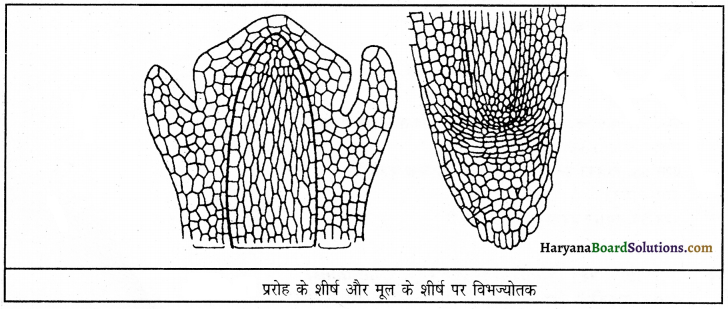
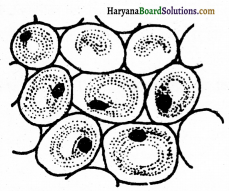
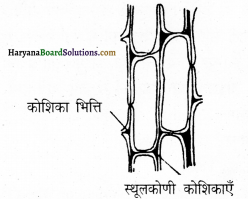
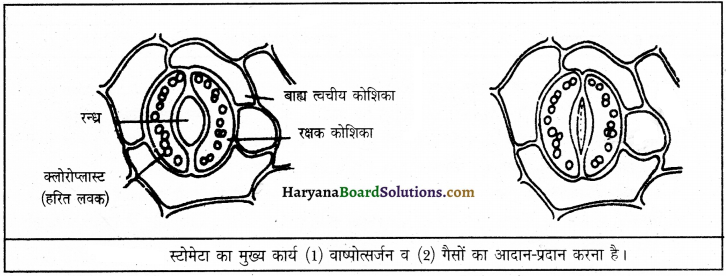
![]()

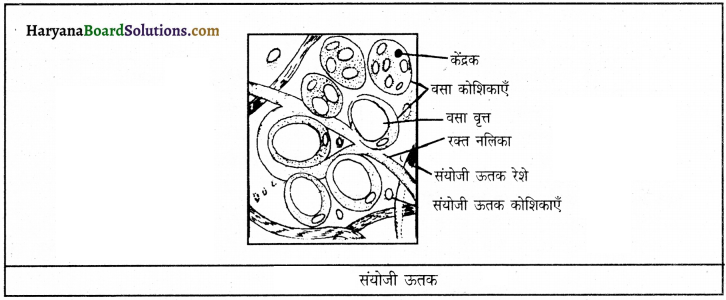

![]()
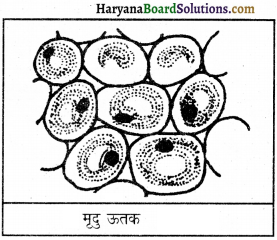

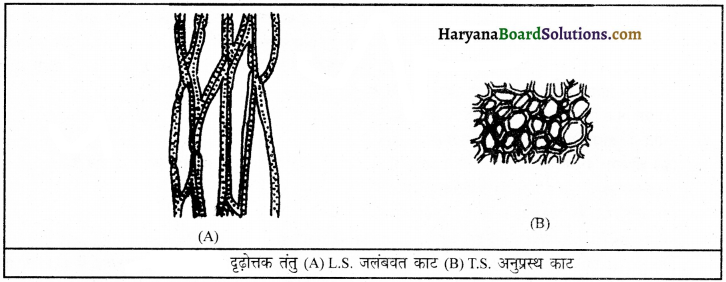
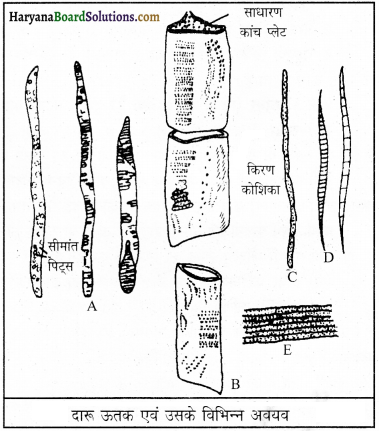
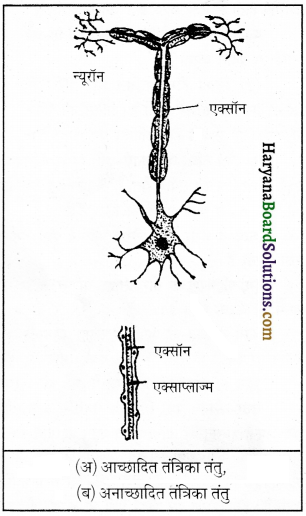

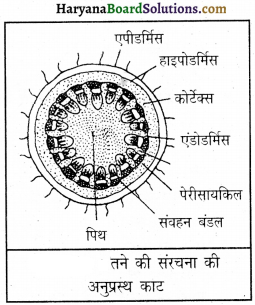
![]()
![]()
